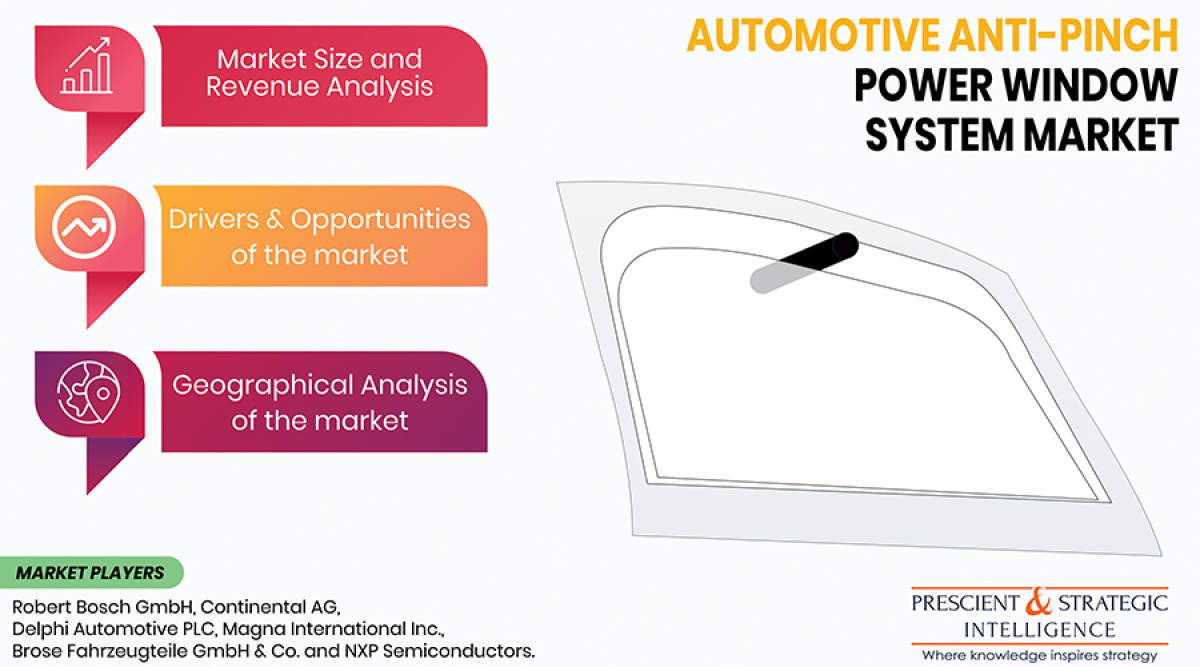Automotive anti-pinch refers to a safety technology that is used in the power windows of cars. This system restricts the winding up of the car window if it stumbles upon any obstacle in the path of the glass. The electric motor of the vehicle is equipped with a sensor that can identify the resistive force working against the glass movement. After sensing an obstacle, the motor prevents the closing action of the window to avoid any injury to a passenger or driver.

As an anti-pinch power window system is a part of vehicle safety features, rising public and government awareness about vehicle safety will propel the automotive anti-pinch power window system market at an exceptional CAGR of 12.0% during the forecast period (2017–2023). According to P&S Intelligence, the market was valued at $1,690.2 million in 2016, and it will generate $3,611.2 million revenue by 2023. For instance, the National Highway Traffic Safety Administration (NHTSA), under the U.S. Department of Transportation (DoT) mandates the installation of power windows in vehicles manufactured in the country.
In addition, the booming passenger car production will also facilitate the production of anti-pinch power widow systems globally. The International Organization of Motor Vehicle Manufacturers (OICA) states that the global automotive industry manufactured 55,834,456 passenger cars in 2020. The increasing production of passenger cars can be primarily credited to the mounting disposable income of people and the booming economy of developing countries, such as India and China. For example, the gross national disposable income of India grew from INR 1,73,15,933 crore in the financial year (FY) 2017–2018 to INR 1,92,37,943 crore in the FY 2018–2019.
In recent years, automotive anti-pinch window system manufacturers, such as Brose Fahrzeugteile GmbH & Co., Continental AG, Magna International Inc., Delphi Automotive PLC, and Robert Bosch GmbH, have focused on strategic partnerships and product launches to meet the needs of commercial vehicle and passenger car manufacturers. In contemporary times, luxury car manufacturers, such as Volvo, Mercedes-Benz, BMW, Audi, Tata Motors, General Motors, Lexus, Land Rover, Honda, and Hyundai, have become eminent users of such automotive products.
Globally, the European and North American regions collectively accounted for the majority of the share in the automotive anti-pinch power window system market in 2016. The dominance of these regions can be credited to the largescale vehicle production and export, hefty investments being made in the automotive industry, rapid technological advancements, and stringent vehicle safety norms in European and North American countries. The European Automobile Manufacturers’ Association (ACEA) states that member nations of the European Union (EU) manufactured 10.8 million passenger cars and 2.1 million commercial vehicles in 2020.
Therefore, the mounting vehicle safety concerns and the soaring passenger car production will accelerate the adoption of automotive anti-pinch power window systems in the coming years.